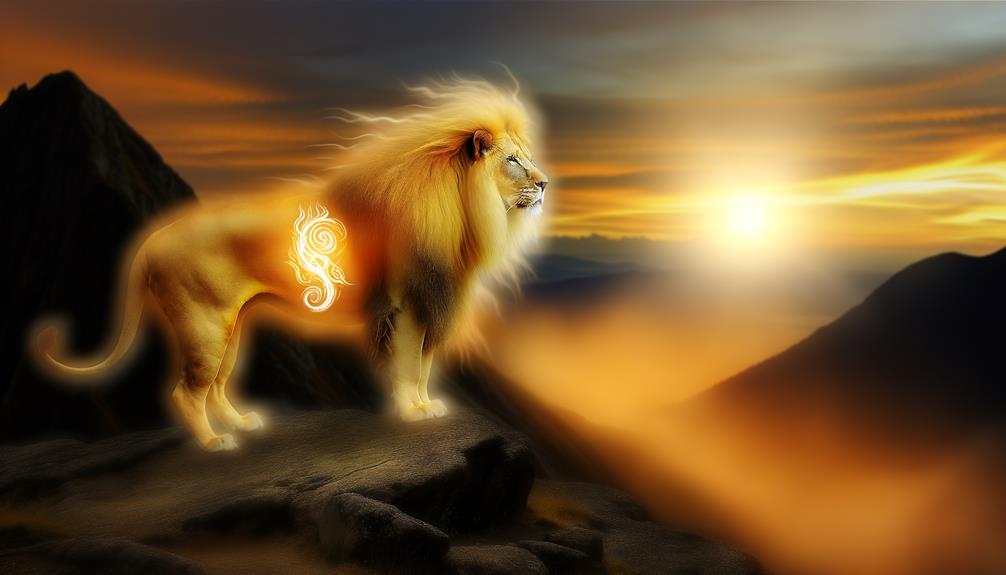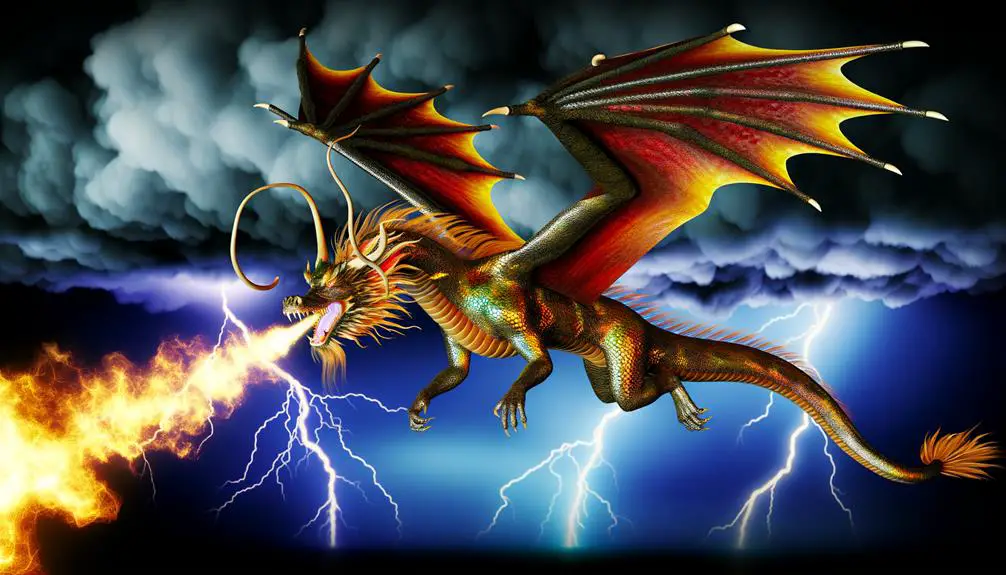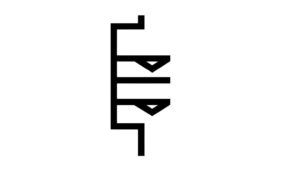3 Timeless Symbols of Strength and Courage
Symbols representing strength and courage span various cultural and natural elements. The lion, revered for its powerful build and protective nature, epitomizes dominance.
Similarly, the eagle, celebrated for its keen vision and formidable flight, symbolizes physical prowess and leadership. The oak tree stands as a natural emblem of resilience with its deep roots and adaptability.
Historical artifacts like the warrior's shield manifest as timeless icons of defense and bravery. Additionally, mythical creatures such as dragons and anchoring objects symbolize steadfastness and fortitude.
Bears, celebrated in Native American and Norse traditions, exemplify wisdom and indomitable courage. Explore the nuances behind each.

Key Takeaways
- Lion: Revered for its powerful build and leadership role, symbolizing dominance and protection.
- Eagle: Celebrated for its keen vision and powerful flight, representing strength and high aspirations.
- Bear: Universally recognized as a symbol of formidable strength and indomitable courage.
- Oak Tree: Emblematic of resilience and stability, with deep roots symbolizing strength.
- Warrior's Shield: Historically significant, representing defense, resilience, and courage across various cultures.
Lion

Why is the lion universally recognized as a symbol of strength and courage?
The lion's physical attributes, including its powerful build, majestic mane, and formidable hunting capabilities, contribute to its symbolic status.
Historical records show that various cultures, from ancient Egypt to medieval Europe, have revered the lion.
The lion's role as a top predator in its ecosystem exemplifies dominance and control, reinforcing its association with strength.
Moreover, in literature and art, lions are frequently depicted as protectors and leaders, bolstering their image as courageous figures.
Empirical studies on animal behavior also highlight the lion's social structure, where the male lion defends its pride, further cementing its role as a guardian and a symbol of bravery.
Oak Tree
The oak tree is renowned for its deep roots, symbolizing strength by anchoring itself firmly into the earth. This ensures stability and longevity.
Additionally, the oak tree's ability to withstand varying weather conditions throughout the seasons exemplifies resilience.
These characteristics collectively underscore the oak tree as a potent emblem of both strength and courage.
Deep Roots Significance
Renowned for its deep roots, the oak tree symbolizes steadfastness and resilience, making it an emblematic representation of strength and courage.
The extensive root system of the oak enables it to anchor firmly into the ground, providing stability and nourishment. Studies in dendrology reveal that these roots can extend horizontally up to three times the tree's height, ensuring access to essential nutrients and water. This biological design not only supports the tree's physical structure but also equips it to withstand strong winds and adverse conditions.
The deep roots signify an unyielding foundation, reflecting an enduring ability to surmount challenges. The oak tree's root system epitomizes a profound natural metaphor for unwavering strength and perseverance.
Resilience Through Seasons
Through its ability to adapt and thrive across diverse climatic conditions, the oak tree exemplifies resilience throughout the changing seasons. This resilience can be analyzed through its biological and ecological attributes:
- Seasonal Leaf Shedding: Oak trees shed leaves in autumn to conserve water and energy during winter, demonstrating adaptive efficiency.
- Deep Root System: The extensive root network allows for water and nutrient uptake even during drought conditions, ensuring survival.
- Robust Bark: Thick, protective bark guards against harsh weather and pests, contributing to longevity and health.
- Seed Dispersal: Acorns are produced in abundance and dispersed widely, enhancing the species' propagation and genetic diversity.
These attributes collectively illustrate the oak tree's capacity to withstand and flourish through seasonal adversities.
Warrior's Shield

The warrior's shield has been a potent symbol of strength and courage throughout history, serving both practical and emblematic roles in various cultures.
By exploring its historical significance, we can understand how it has been revered and utilized in different epochs.
Additionally, analyzing modern interpretations and comparing cultural variations offers insights into its enduring legacy and evolving symbolism in contemporary contexts.
Historical Significance Explored
In ancient civilizations, the warrior's shield not only served as an essential piece of defensive equipment but also stood as a powerful symbol of strength and courage.
The historical significance of the shield can be explored through various aspects:
- Cultural Identity: Shields often bore intricate designs that represented the warrior's tribe, nation, or personal achievements.
- Military Tactics: Shields were central to formations, such as the Greek phalanx, where interlocking shields created an impenetrable barrier.
- Ritualistic Significance: Many cultures used shields in religious and ceremonial contexts, symbolizing divine protection.
- Heroic Legacy: Legendary figures, like Achilles or King Arthur, are frequently depicted with iconic shields, underscoring their valor.
Understanding these elements reveals the deep-rooted historical importance of the warrior's shield.
Modern Interpretations Analyzed
Contemporary interpretations of the warrior's shield often draw on its historical symbolism, adapting it to represent resilience and bravery in modern contexts. Today, the shield is frequently utilized in corporate branding, motivational literature, and personal development, symbolizing the protection of one's values and the defense against life's adversities.
Empirical studies indicate that visual symbols, like the warrior's shield, can enhance psychological resilience by invoking a sense of historical continuity and personal empowerment. For instance, a 2020 study in the 'Journal of Symbolic Interaction' found that individuals exposed to warrior imagery reported higher levels of self-efficacy and determination.
This modern recontextualization underscores the enduring relevance of the warrior's shield as a potent metaphor for inner strength and courage in contemporary society.
Cultural Variations Compared
Across various cultures, the warrior's shield manifests distinct symbolic meanings and practical adaptations, reflecting each society's unique historical and environmental contexts. Analyzing these variations highlights the intricate interplay between cultural values and technological advancements:
- Greek Hoplite Shield: Known as the aspis, it symbolized unity and protection within the phalanx formation, essential for collective military strategy.
- Medieval European Shield: Often adorned with heraldic symbols, it signified lineage, honor, and individual knightly valor.
- Zulu Shield (iKlwa): Crafted from cowhide, it represented societal status and was integral in traditional warfare tactics.
- Japanese Tessen: A fan-shaped shield used by samurai, it combined practicality with the elegance of martial arts, symbolizing discipline and finesse.
These examples underscore how the warrior's shield serves as a multifaceted emblem across different cultures.
Eagle
Renowned for its powerful flight and keen vision, the eagle stands as a potent symbol of strength and courage in various cultures worldwide.
In Native American traditions, the eagle is revered for its connection to the divine, often seen as a messenger between humans and gods.
The Roman Empire adopted the eagle as a military emblem, epitomizing power and dominance.
Scientifically, the eagle's sharp eyesight, capable of spotting prey from miles away, and its formidable talons underscore its predatory prowess.
Studies demonstrate that an eagle's flight mechanics, characterized by soaring altitudes and swift dives, exemplify physical strength and precision.
These attributes collectively cement the eagle's status as a universal emblem of resilience and bravery.
Dragon

The dragon, a mythical creature often depicted as a formidable beast, serves as a symbol of strength and courage in various ancient and modern cultures. Evidence suggests that dragons hold significant cultural symbolism across diverse societies:
- Chinese Culture: Dragons are revered as benevolent spirits symbolizing power, protection, and good fortune.
- European Mythology: Dragons often represent chaos and formidable challenges, necessitating bravery to overcome.
- Japanese Tradition: The dragon is a water deity, embodying strength and adaptability.
- Mesoamerican Beliefs: Quetzalcoatl, the feathered serpent, signifies wisdom and authority.
Analytically, the dragon's consistent association with power and valor across disparate cultures underscores its universal emblematic role in human consciousness. This mythological figure not only embodies physical might but also moral fortitude.
Anchor
As a symbol deeply rooted in maritime history, the anchor represents stability and resilience in the face of adversity. Its primary function in seafaring—to hold a vessel steady against unpredictable currents and tempests—mirrors its metaphorical significance.
Historically, sailors facing treacherous conditions relied on anchors for survival, which is why it has come to symbolize groundedness and steadfastness. The anchor's cross-like structure also evokes themes of hope and salvation, especially in Christian iconography, where it signifies faith and endurance.
Psychological studies suggest that symbols like the anchor can provide comfort and emotional support, reinforcing inner strength during challenging times. The anchor transcends its nautical origins to embody universal attributes of strength and courage.
Bear

Symbolizing raw power and unyielding bravery, the bear has long been revered in various cultures as an emblem of strength and courage. This majestic animal's symbolic significance can be dissected through multiple cultural lenses:
- Native American culture: Bears are often considered protectors and symbols of healing.
- Norse mythology: The bear represents the fierce warrior spirit, embodied by the Berserkers.
- Japanese folklore: Bears signify wisdom and introspection, often associated with mountain deities.
- Slavic traditions: Bears are venerated as guardians of the forest and symbols of fertility.
These diverse representations illuminate the bear's universal role as an icon of formidable strength and indomitable courage, deeply embedded in human consciousness across various societies. This analysis underscores the bear's enduring legacy as a symbol of resilience.
Conclusion
In summation, symbols of strength and courage manifest across diverse cultures through the lion, oak tree, warrior's shield, eagle, dragon, anchor, and bear.
Each symbol encapsulates unique attributes, yet collectively they embody resilience, bravery, and fortitude.
The lion's regal authority, the oak's enduring stability, the warrior's shield's protection, the eagle's soaring vision, the dragon's mythical power, the anchor's steadfastness, and the bear's formidable presence all converge to paint a tapestry rich with symbolic meaning, illustrating humanity's timeless quest for strength and valor.






